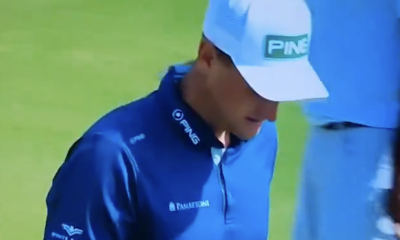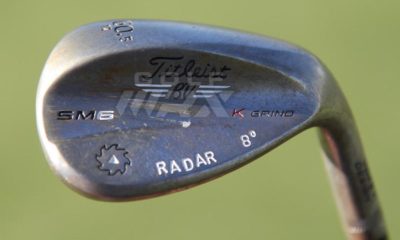Product Reviews
Callaway Paradym Ai Smoke driver review (Triple Diamond and Max) — Club Junkie Reviews

New drivers receive all the hype at the beginning of the year, and for good reason: they are the most technology-packed clubs in the bag and the biggest investment for golfers. This year, Callaway is right there on technology with the new Paradym Ai Smoke lineup.
The big story is the Ai Smart Face with micro deflections for added ball speed and straighter ball flight. There is also a new 360-degree carbon chassis that is lighter and stronger than the previous model.
Callaway’s Paradym Ai Smoke lineup consists of four driver heads. I am going to take a look at the two most popular models for GolfWRX followers, the “bread and butter” Max, and the Triple Diamond head.
For a more in-depth review of these drivers check out the Club Junkie podcast below or on any podcast platform.
Paradym Ai Smoke Triple Diamond
This head is aimed at the lower handicap golfer who is looking for lower spin, lower launch, and the ability to shape their shots. The shape is the most compact at address of the Ai Smoke drivers and the cleanest looking with the deletion of the chevron alignment mark on the top. The shape also looks to be a little shorter from heel to toe as well as from face to back. I like the forged carbon on the sole and love that no two drivers will ever look exactly the same.
Hitting the new Paradym Ai Smoke TD is a real pleasure as when I first hit it I thought it was louder than the previous Paradym. I was hitting indoors and the sound was greatly amplified because outdoors the TD has a very muted sound and nice soft feel. The new Ai Smart Face lets you feel the ball compress off the face when you strike it solid and the face overall just has a little softer feel than the Paradym.
While the launch number wasn’t that far off from the Ai Smoke Max driver, the overall ball flight was flatter and just slightly lower with the TD. My decent angle was also about one-degree shallower with the TD. The biggest surprise to me was how playable the TD was on poor shots. I expected the head to be a little more demanding and penalizing when you hit it off the toe or heel but was happily met with shots that didn’t venture too far off the fairway.
Keeping the heavy weight in the back makes the TD a driver playable by a wider range of handicaps. The Ai Smart Face also kept the ball speed numbers extremely consistent no matter where the ball made contact. With how well I hit the Triple Diamond, I am now a little more confident it will perform on even a poor driving day!




Paradym Ai Smoke Max
Callaway’s bread and butter driver is super adjustable to let fitters dial it into a wide range of golfers. While some will argue that the Triple Diamond driver is the best looking, I think Callaway did a nice job on the Max head. A touch longer from heel to toe and the face-to-back length is a little more stretched but it all works together for a larger but good-looking driver. I do like larger profile drivers as they tend to give you confidence that you don’t have to be perfect and they offer some help when you are off. I like the sound on the TD driver, but the Max might be even a touch quieter upon impact. It could be the weight track in the back with additional structure that diverts the sound waves, giving a low-pitched metallic sound.
The launch on the Max was just a little higher than the TD, but it tended to be consistently higher when I hit my low draw miss. That shot seemed to stay straighter and go a little higher with this Max head. Ball flight with the Max tended to be straighter with less curvature to draws and fades. You might miss the fairway on either side, but the ball was on a straight line right or left and didn’t stray that far offline.
Off-center strikes were helped by the Ai Smart Face and kept the ball speed higher than you would expect. Callaway hasn’t made any claims to MOI numbers but the Max is a very stable driver that doesn’t let the face flop open on toe contact and won’t snap shut when you hit it off the heel. This stability gives you a consistent and straight flight that you can count on when you need it.

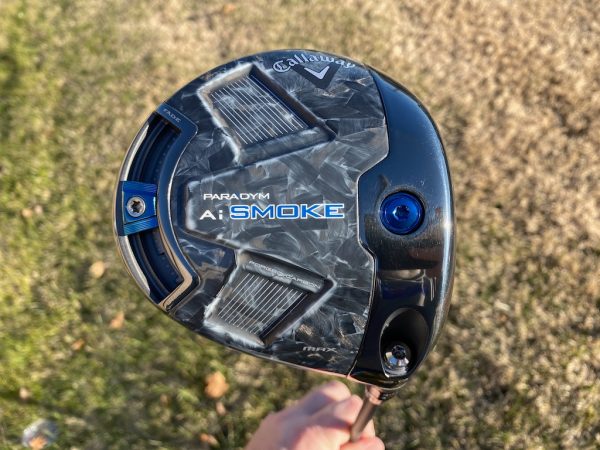


Callaway has really brought some serious firepower to the driver game this year with the Ai Smoke models. There is the Triple Diamond for the player who needs lower spin and lower ball flight and the Max for the player who wants it all with added forgiveness. There are also two other models, Max D, and Max D Fast, for some added draw, higher launch, and lighter weight (Max D Fast). Overall, Callaway has a driver that should fit your swing!
- LIKE0
- LEGIT0
- WOW0
- LOL0
- IDHT0
- FLOP0
- OB0
- SHANK0
Equipment
GolfWRX Spotlight: Vortex Optics laser rangefinders

Vortex Optics, a player in the hunting space since 1986, is breaking into the golf world with three rangefinders. The Barneveld, Wisconsin-based company just announced its Blade, Blade Slope, and Anarch laser rangefinders.
In addition to riflescopes, spotting scopes, and binoculars, Vortex Optics has been producing rangefinders for years, so they’re anything but novices. The customer-first, family-owned business is leveraging what it already knows about making great rangefinders and applying its technology and Clear View optics to products designed for the fairways, rather than the forest or field.

“Entering the world of golf rangefinders was a natural choice for us,” said Vortex CEO Joe Hamilton. “When our customers, dealers, and team members – all part of Vortex Nation- unanimously called for our expertise in optical quality, technology, innovation, and customer service to elevate their golf experience, it became a clear path forward. We’re excited to bring our proven success to the golfing community.”

Vortex Optics Blade
An impressive laser rangefinder.
Featuring 6x magnification and a black LCD display, the Vortex Optics Blade is reflective up to 1,400 yards and to the flag at up to 350 yards. The minimum range is six yards and accuracy is +/- one yard. The linear field of view at 100 yards is 37 feet 6 inches. Measuring time is one second.

The Blade and Blade Slope rangefinders are slightly smaller than the Anarch, measuring 3.9 inches by 3.0 inches by 1.5 inch. The Blade weighs 6.5 ounces.
Range modes include line of sight and scan and Pin Spotter Mode (vibration when the pin is locked onto) is an additional feature. Handily, the Blade rangefinder is equipped with a cart magnet.
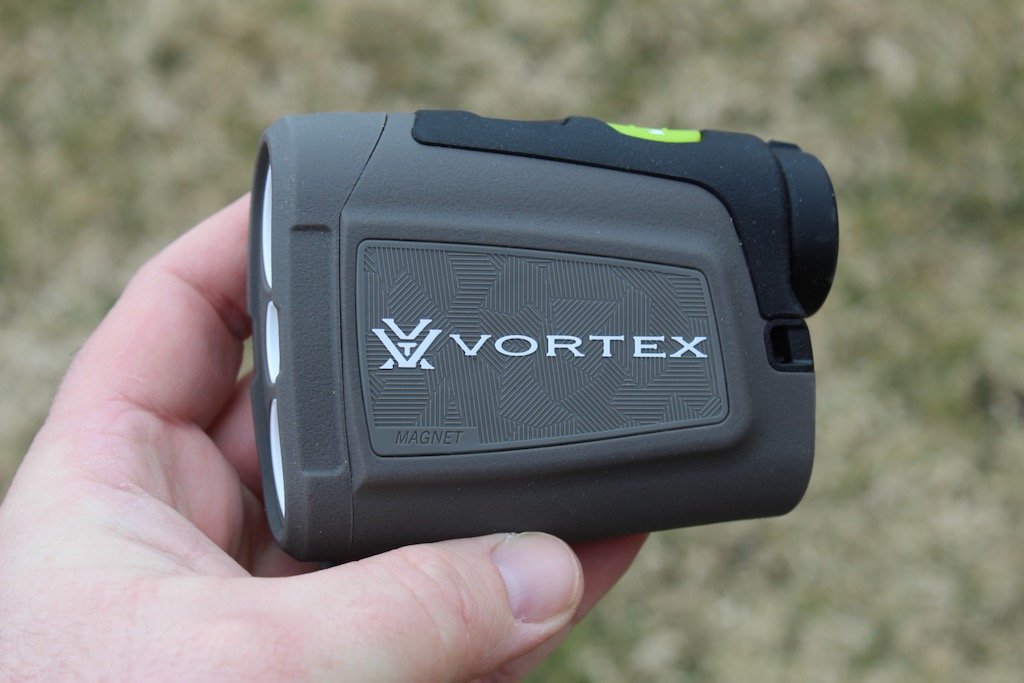
Built from a polymer chassis, the Vortex Optics Blade rangefinder is waterproof and shockproof.

The Vortex Optics Blade retails for $299.
Vortex Optics Blade Slope
A laser rangefinder with slope functionality.
Just like the Vortex Optics Blade rangefinders, the Blade Slope features 6x magnification and a black LCD display and is reflective up to 1,400 yards and to the flag at up to 350 yards. The minimum range is six yards and accuracy is +/- one yard. The linear field of view at 100 yards is 37 feet 6 inches. Measuring time is one second.

Slope mode, of course, is the distinguishing feature between the Blade and Blade Slope. Slope mode accounts for the changes in gradient, i.e. a downhill shot plays shorter, an uphill shot plays longer. Presently, slope mode is not legal in tournament play, but the Vortex Optics Blade Slope allows users to toggle it on/off.
As mentioned earlier, the Blade Slope rangefinders is slightly smaller than the Anarch. It measures 3.9 inches by 3.0 inches by 1.5 inch and weighs 6.5 ounces.

Again, range modes include line of sight; Pin Spotter Mode is an additional feature. The cart magnet — essential for riders — is present in the Blade Slope.
Polymer chassis. Waterproof. Shockproof — just like the Blade.

The Vortex Optics Blade Slope retails for $399.
Vortex Optics Anarch
An image-stabilized laser rangefinder.
The Vortex Optics Anarch features 6x magnification and a red illuminated LCD display. It is reflective up to 1,400 yards and to the flag at up to 450 yards (100 yards more than the blade). The minimum range is 10 yards and accuracy is +/- one yard. The linear field of view at 100 yards is 31 feet 8 inches. Measuring time is one second.

The Anarch is slightly larger and heavier than the Blade models, measuring 4.0 inches by 3.0 inches by 1.6 inch. It weighs 9.2 ounces.

Range modes include slope, line of sight and scan and Pin Spotter Mode is an additional feature as well as image stabilization. A cart magnet is present here as well.

Like the other rangefinders in the lineup, the Vortex Optics Anarch is waterproof and shockproof. While the blade models feature a polymer chassis, the Anarch is crafted from a magnesium chassis.
The Anarch retails for $599.

In addition to the rangefinder, all packages include a case with a carabiner, a ball marker, and a lens cloth.
All rangefinders are backed by Vortex Optics’ VIP warranty — a lifelong, fully transferable promise to repair or replace your rangefinder should it become damaged.
Rangefinders are available now. For more purchase details, head to Vortex Optics’ website. You can catch up with the company on social media: Instagram, X, Facebook, YouTube.
- LIKE8
- LEGIT3
- WOW1
- LOL1
- IDHT0
- FLOP3
- OB0
- SHANK0
Equipment
TaylorMade Qi10 driver review. All 3 models! – Club Junkie Reviews

TaylorMade’s new Qi10 drivers are packed with new technology for maximum performance. Whether you are looking for maximum forgiveness or low-spin workability, there is a Qi10 driver for your needs. The faces are still 60 layers of carbon fiber, but in contrast to the Stealth line, feature a much more subtle blue tone. TaylorMade’s new Infinity Carbon Crown not only gives a weight advantage but also gives each driver a much cleaner and better look, to my eye. Each driver is a little different but built for maximum performance.
For the full, more in-depth review, check out the Club Junkie Podcast on every podcast platform and on YouTube.
TaylorMade Qi10 Max
This is the driver that is getting the most buzz it seems from the 2024 TaylorMade lineup thanks to its 10K MOI measurement. This 10K MOI means that the Qi10 Max head is extremely stable on mishits and will prevent the head from swinging open or closed.
The Max definitely has the largest-looking profile from address and has a more rounded shape to it compared to the other Qi10 drivers. I like the more rounded shape, and even though it doesn’t have the classic TaylorMade shape, it is easy on the eyes. The new blue carbon face is also more subtle and you don’t notice it compared to the previous red faces on the Stealth and Stealth 2 drivers.
Out on the course, or range, is where you will notice where the 10K comes into play. The first bad swing will be met with a shot that is more than likely more playable than you would have thought. The head keeps the ball on a straighter trajectory with reduced curve once in flight. You will still miss the fairway right or left with those swings but the shot will typically be straight to either side.
While my numbers from my most recent range session don’t show it, the launch on the Qi10 Max was more mid-high for me on the course. Ball speed was consistent and the Max held onto a good amount of it, even when you didn’t catch the center of the face. I went through my shots and was pretty impressed with the limited variation in ball speed throughout my session.
The spin numbers were also lower than expected and to be fair I was hitting a 9-degree Qi10 Max head, and I typically hit a low draw shot shape. I am not considered a high-speed or spin player, but the Qi10 Max didn’t spin a ton, even when hit low on the face. Only a handful of shots touched the low 3,000 RPM mark while most stayed lower than that. I think moving to the 10.5-degree head would be a better fit for me, adding some launch and a little spin to my shots would increase the distance by a few yards.




TaylorMade Qi10 LS
The model that we first drooled over in Rory and Tiger’s bags early this year! TaylorMade’s 2024 low-spin driver sports a new name, dropping the “Plus” designation. The LS model clearly has the traditional TaylorMade pear shape to it and a noticeably more compact look. A deeper face and shorter length from heel-to-toe give the look of a driver that the more skilled player will be able to easily shape shots with. The head also looks a bit more open than the Max head, and I love that TaylorMade has been able to create toplines that look more open than they appear.
The Qi10 LS creates some very long drives out on the course and range. This driver offers a little more feel and slightly quieter sound than the other two models, you can really feel the ball compress on the face at impact. For players who routinely hit the center, you will be rewarded with consistent fast ball speed and great distance. I hit my two longest drives with this head when I was going through my range session the other day.
Ball flight was flat, but the head is still easy to elevate and hit towering, boring tee shots. I thought the LS was actually going to come out really low, but I had no problem hitting higher shots with almost no spin. If spin is your problem with driver, the LS could be the pill you need as it is a very low spin head. I was rarely getting into the mid-2000s and had most shots in the high 1900 RPM. I never saw a ball go over 2,600 RPM, no matter where I hit it on the face.
Now the LS will show you a little less love when you aren’t swinging well and hitting it close to the center. For me, the start line of my shots was the farthest right of the three heads, but I saw more movement in the air on poor swings. There was also a little more drop-off in ball speed when the ball traveled away from center compared to the Qi10 and Qi10 Max heads.




TaylorMade Qi10
This is TaylorMade’s “bread and butter” head should fit a wide range of golfers. We have seen Rory move into this head, and we should see it in a lot of amateur bags as well this year. The Qi10 head bridges the gap between ultra forgiveness and low-spin distance with a little larger profile than the LS.
The shape is closer to the LS with a slightly more tapered line from the back of the hosel to the round back of the driver. I can’t stress enough how much I like the sleek look of the new Infinity Carbon Crown as it just gives a great view to the golfer.
This driver is the underrated one of the bunch in my opinion. While it isn’t the most forgiving or the lowest spin, it does everything rather well. It is pretty darn forgiving and definitely isn’t in a high spin category so plenty of golfers will find this head working for them.
I found the standard Qi10 the most consistent for me as it was easy to launch, and I think if you took away a few of the shots I hit higher on the face on the LS, this would have been the highest launching head of the group. The launch was mid-high and with that, the spin still never got wildly high. The misses were very straight and like the Max had less curve to them, more straight right or left.
To me, the ball speed numbers seemed to stay more consistent on mishits compared to Stealth 2 and center strikes had a softer feel to them. High-toe misses stayed in play with a more gentle draw and more carry than I expected, most of those shots ended in a pretty tight area. Swinging the Qi10 also felt a little different than the Max as I think the CG placement gives each driver its own unique feel through your swing. The Qi10 felt like it was a touch easier to release and rotated back to square at impact just a little faster than the Max. I don’t know if you could tell if you didn’t hit them side-by-side but if you do you can probably feel the difference.


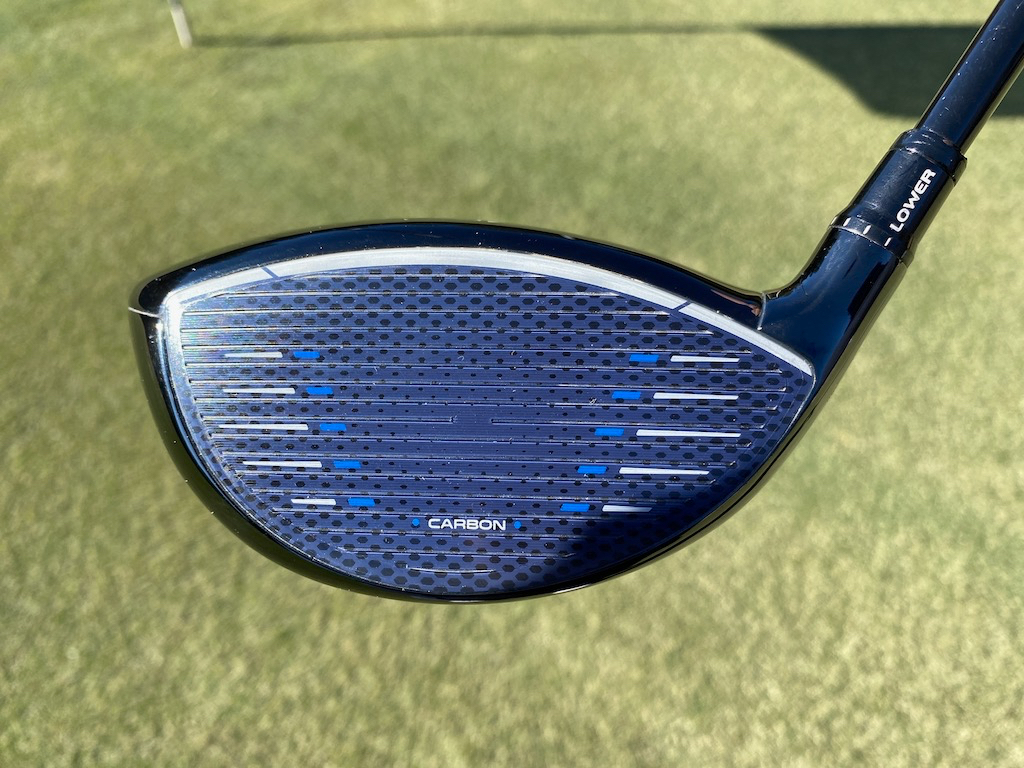

TaylorMade definitely brought some changes to the Qi10 line, and I think, overall, they’ve crafted some really good drivers. The Qi10 Max will be great for those players who need the most stability they can to find the fairways, and I think will play to lower handicaps than expected. The Qi10 LS will be a skilled player’s wand to create shots and work the ball to positions on the fairway that allow them to score better. The Qi10 will fit a wide range of golfers who are looking for a driver that helps them on bad shots but still has the ball speed and spin to hit their longest drives.
- LIKE41
- LEGIT8
- WOW2
- LOL4
- IDHT0
- FLOP2
- OB0
- SHANK4
Equipment
L.A.B. Golf DF3 putter review – Club Junkie Reviews

I know a lot of golfers haven’t heard of L.A.B. Golf, but they are a putter company making some serious waves in the golf space. Their Lie Angle Balanced putters have been a hit with amateur golfers for years, and we are now seeing more and more showing up in the bags of professional players. Lie Angle Balanced putters are built so that when you rest the putter horizontally, the face points at the target.
L.A.B. Describes Lie Angle Balance: “Lie Angle Balance (L.A.B.) Technology makes it effortless for golfers to deliver a square putter face at impact because, unlike other putters, it keeps the putter face square to the arc throughout the stroke. It makes putting as easy as picking the right line, the right speed, and making your natural stroke.”


I will admit that the DF3 is not the first L.A.B. Golf putter that I have owned or reviewed. I have had the pleasure of rolling the original Mezz.1 and the larger Mezz.1 Max putters as well. But the new DF3 looks very good when you take it out of the box. The Platinum finish has enough texture to ensure you won’t have to worry about glare from the sun but also has a depth to it that looks luxurious. I think L.A.B. nailed the size of the DF3 as it is compact but has some thickness to it that is very proportionate. Picking up a ball is also so easy and simple, just set the hole in the rear of the putter down on the ball. With almost zero pressure the ball sticks to the putter and you effortlessly bring it up.


I rolled the DF3 initially indoors for about 4-5 days and the first thing I noticed was the softer feel and very muted sound. Across the entire face you get a slightly softer feel than the Mezz.1 Max but it isn’t mushy or unresponsive. You can still tell when you mishit the ball or strike it dead center on the face.
When you get the DF3 on a real green, you can see how the horizontal grooves on the face produce a smooth roll with plenty of topspin and very little skid or hop. L.A.B.’s lie angle balance does just work and it has proven in every putter head they make. The face stays pointed at the target through the whole stroke without any need for you to manipulate it. I found that for me very light grip pressure allows the putter to move straight back and straight through the ball, getting it started on line easily and consistently.
Confidence on short putts is through the roof as you know you just have to aim the putter correctly in order to make a short and straight putt. Greens here in Michigan are far from smooth in February, but I never once felt like I didn’t start my putt on the intended line. Longer putts for me took a little more practice to get used to as you don’t have to try and guide the face back to square on a bigger backswing. Trusting that the DF3 will be square to your target is all you have to do, then just pull the putter back and let it go. Lag putts are very accurate and after a little while you start to imagine that you should make a few more than you statistically should. Once you get comfortable with a L.A.B. putter, it all comes down to your read and the speed you hit the putt.

The DF3 does have a little different feel than my Mezz.1 Max, and I have to think that’s due to the added stability of the DF3. The new putter also has a new grip that feels a little more familiar in your hands, a pistol version of the Press grip. Press grips are designed where the shaft installs on an angle, vertically through it, to work with the forward press in the shaft angle. This new pistol option is immediately comfortable and sits in the pads of your fingers really well. The pistol shape feels more traditional compared to the more oval shape of the Press II that I have on my Mezz.1 Max. L.A.B. also added some texture to the grip and that should provide some added tackiness when the hot and humid summer days roll in.

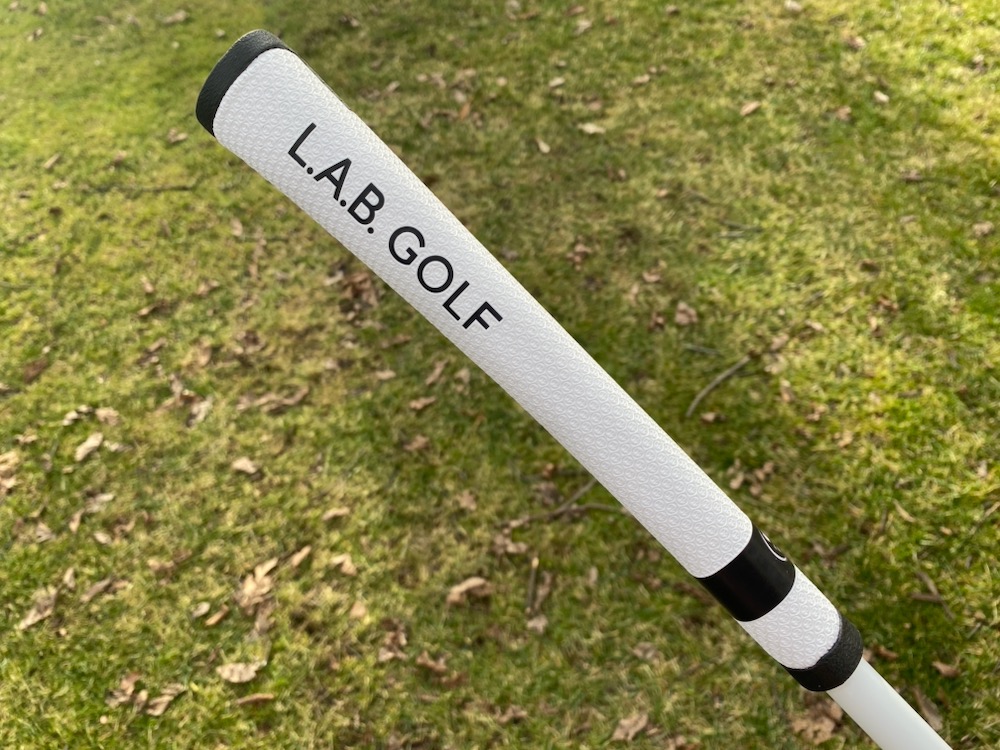


Overall, I think L.A.B. Golf did a wonderful job with the new DF3 putter. They were able to enhance the shape of the head, increase stability, and keep the same Lie Angle Balance technology working in harmony together. Add these up, and I think golfers who were turned off by the looks of the DF2.1 will be excited to try the DF3.
- LIKE27
- LEGIT7
- WOW4
- LOL2
- IDHT0
- FLOP1
- OB0
- SHANK2
-

 Opinion & Analysis2 weeks ago
Opinion & Analysis2 weeks agoThe Wedge Guy: Golf mastery begins with your wedge game
-

 19th Hole4 days ago
19th Hole4 days agoTour pro calls Anthony Kim a ‘f*****g idiot’ following Instagram comeback post
-

 Accessory Reviews3 weeks ago
Accessory Reviews3 weeks agoInsider photos from Tiger Woods’ launch event for his new “Sun Day Red” apparel line
-

 19th Hole6 days ago
19th Hole6 days agoThis Rory McIlroy post-round ‘The Match’ moment is going viral…but all is likely not what it seems
-

 19th Hole3 weeks ago
19th Hole3 weeks agoTiger Woods opts for veteran caddie to loop for him this week at Riviera
-

 19th Hole6 days ago
19th Hole6 days agoAnthony Kim’s speculated LIV Golf sign-on fee may surprise you
-

 19th Hole2 weeks ago
19th Hole2 weeks ago6-time Euro Tour champ says Patrick Cantlay ‘should be nailed with a huge fine’ over Genesis incident
-

 Whats in the Bag4 days ago
Whats in the Bag4 days agoAnthony Kim WITB 2024 (February)





